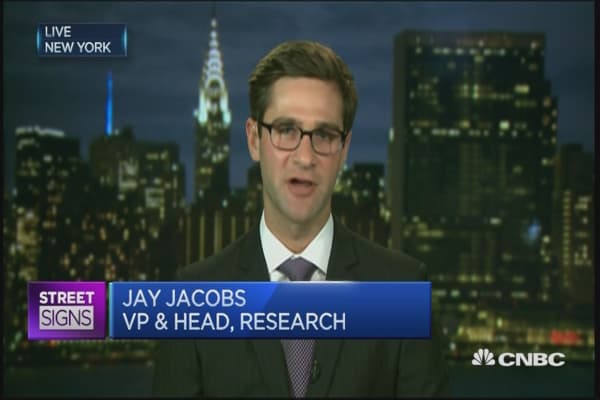Mortgage rates edge higher but remain within a narrow band
According to the latest data released Thursday by Freddie Mac, the 30-year fixed-rate average ticked up to 4.05 percent with an average 0.5 point. (Points are fees paid to a lender equal to 1 percent of the loan amount.) It was 4.02 percent a week ago and 3.57 percent a year ago. The 30-year average has hovered between 4.02 percent and 4.05 percent the past three weeks.
“Mixed economic reports over the last few weeks have anchored the 30-year mortgage rate around the 4 percent mark,” Sean Becketti, Freddie Mac chief economist, said in a statement.
The 15-year fixed-rate average rose to 3.29 percent with an average 0.5 point. It was 3.27 percent a week ago and 2.81 percent a year ago. The five-year adjustable rate average increased to 3.14 percent with an average 0.5 point. It was 3.13 percent a week ago and 2.78 percent a year ago.
With the yield on the 10-year Treasury climbing to 2.42 percent Tuesday, its highest point since March 30, home loan rates — which tend to follow the movement of long-term bonds — were slowing moving higher. Then came the unexpected firing of FBI Director James B. Comey. Because this type of news makes investors anxious and causes them to seek safety in bonds, the yield on the 10-year U.S. bond slid to 2.41 percent Wednesday.
The retreat in long-term bond yields came too late in the week to be factored into Freddie Mac’s survey. The government-backed mortgage-backer aggregates rates weekly from 125 lenders from across the country to come up with a national home loan rate average.
Experts are mixed on where mortgage rates are headed. Rates had fallen in 6 of the past 7 weeks. Bankrate.com, which puts out a weekly mortgage rate trend index, found that about half of the experts it surveyed say rates will go up and another half say they will remain relatively stable in the coming week. Less than 10 percent say they will fall. Greg McBride, chief financial analyst for Bankrate.com, is one who expects rates to rise.
“The job market is tightening, inflation is moving up, and the Fed is poised to raise rates in June — all of which is providing some lift to mortgage rates,” McBride said.
Meanwhile, mortgage applications picked up last week, according to the latest data from the Mortgage Bankers Association. The market composite index — a measure of total loan application volume — increased 2.4 percent. The refinance index rose 3 percent, while the purchase index grew 2 percent to its highest level since October 2015.
The refinance share of mortgage activity accounted for 41.9 percent of all applications.
Robert Bobby Darvish platinum Lending Solutions of Orange County











